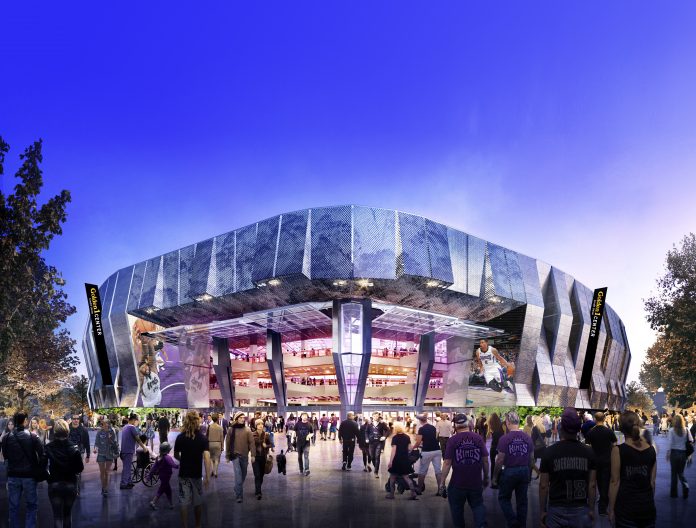The drive towards a more sustainable environment is important ecologically and economically. Rhys Tyler and David Philp of AECOM discuss how BIM and machine learning can be deployed to count the cost of carbon and transform how and what we build
Governments and investors are increasingly counting the carbon cost of the built environment, which is responsible for a third of global carbon emissions. The use of Building Information Modelling (BIM) to capture intelligence expands the traditional role of BIM to include modelling energy performance across an asset’s lifecycle to measure and track sustainability targets such as embodied carbon or energy efficiency.
This is important. It means we are being more proactive and moving from measuring carbon to reducing it wherever possible. AECOM was the first US-based company in the engineering and construction sector to get our emissions reduction targets approved by the globally recognised Science Based Targets initiative (SBTi). These targets include a 20% reduction in Scope 1 and 2 emissions and a 10% reduction in supply chain emissions by 2025 from our 2018 baseline.
Achieving net-zero carbon across portfolios is a strategic organisational priority for everyone in the built environment as we develop and retrofit assets. There is a new urgency post-Covid to renew focus on sustainability policies so that any recovery is a green recovery.
At AECOM, we are using BIM together with convergent and emerging technologies such as machine learning to help our clients meet their sustainability goals.
For example, in Sacramento, California, we designed the world’s first LEED Platinum arena, which is also the first 100% solar-powered professional sports venue. Using rapid engineering techniques such as generative design, AECOM is helping our clients explore various design options and optimise their carbon footprint to determine whole-life sustainability costs to ensure clients can minimise their carbon footprint as much as possible.
So how can we count the carbon cost-effectively?
Optioneering at the outset
In the UK, AECOM collaborated with the University of Sheffield to create regenerate, an open source tool which helps organisations adopt circular economy principles to eliminate waste and reuse resources. The tool highlights design strategies that have positive impacts on the project build and ensures a minimisation of waste across the project’s life.
In order to bring down carbon emissions across a project’s life, we can also look at a variety of material options available, so we are actively sourcing lower carbon and ‘local’ products. AECOM has developed an effective toolkit that counts carbon early in the design process. Iterative design calculations create efficiencies in quantity take-off.
“The toolkit is designed for at speed decision making using a parametric 3D model quantity extraction process to calculate the impact of embedded carbon that can be tested through the design stage,” said Rhys Tyler, head of benchmarking & efficiency, cost intelligence UK&I. “We’re excited to be creating an early stage energy performance evaluation using new technologies.”
Machine learning to inform decision making
New technologies such as machine learning can further inform our decision making, particularly on projects where constraints are numerous and the client may have hundreds of options to choose from. Machine learning can be informed by qualitative data from material specifications and standards such as BREEAM, LEED and WELL, as well as quantitative data, ie cost and carbon, to make decisions that are weighted towards better carbon outcomes. Its deep analysis has the potential to identify specific components, services or use cases that can be modified to decrease carbon footprints and predict ways these variables will change over time.
Recent advances in processing power, storage capacity and cloud services have made machine learning a more affordable tool for commercial organisations in the built environment. Machine learning packages don’t require expertise in the statistical principles to use – and offer previously unobtainable levels of computing power at a fraction of the cost available 10-15 years ago. That’s great news for the construction industry and the sustainability agenda.
AECOM is currently collaborating with two UK water companies on applying machine learning to their historic cost data to improve predictive accuracy and identify the asset information that would be most beneficial to define or collect as early as possible in the design process. The improvement of data collected leads to more accurate calculation and quantification of cost and carbon.
Material selection and supply chain decisions
With Environmental Product Declarations (EPDs) and properties in interconnected data dictionaries, we can review and assess embodied carbon and other environmental impacts and bring this information into our BIM environment. Ensuring we know down to the smallest nut and bolt how supply chain decisions will impact client goals can be critical to reducing the carbon cost of a build, refurbishment or maintenance activity.
AECOM’s David Philp comments that applied technology constellations such as BIM, dynamic simulation modelling and digital twinning can help us model and understand the parameters of sustainable operations and optimise whole-life CO2 outcomes, transforming how and what we build. With a drive towards high-performing assets and encouragement to use high-performance computing, energy analysis and the Internet of Things (IoT) to automate processes, we can better achieve the fundamental goal of net-zero.
“Interestingly, we’re finding net-zero build operators are expanding their carbon reduction programmes to include the service provision and the asset’s end user,” he said.
“Clients are engaging end users more and more and beginning to use gamification or energy use applications in order to achieve full lifecycle sustainability.”
Unifying data
Looking to the future, establishing a greater link between BIM and GIS data will help us advance our geo-analytics approach pinpoint the precise location of potential suppliers so we can make better-informed procurement decisions based on a project’s location. For example, teams working on a project hundreds of miles away will need to learn more about the client’s local supply chain and model the use of a variety of materials based on longevity, carbon footprint and logistics.
This will help extend the ‘buy local’ philosophy from the grocery store to the broader AEC industry and help local or regional suppliers to compete with global competitors who may have a cheaper product but cannot offer a similar low carbon footprint.

Rhys Tyler
Associate director, cost intelligence
+44 (0)20 7061 7000

David Philp
Global BIM/IM consultancy director
+44 (0)20 7061 7000












![[VIDEO] Making DorTrak reports easy to read with Fireco Inspecting fire doors at Fireco, firedoor technology, 2023](https://www.pbctoday.co.uk/news/wp-content/uploads/2024/04/JPZ_2364-web-218x150.jpg)
![[VIDEO] Re-flow Field Management review by Traffic Management Installations When TMI began subcontracting for councils and government bodies, they wanted to present their site reporting in a more professional manner](https://www.pbctoday.co.uk/news/wp-content/uploads/2025/03/TMI-Media-1-218x150.png)
